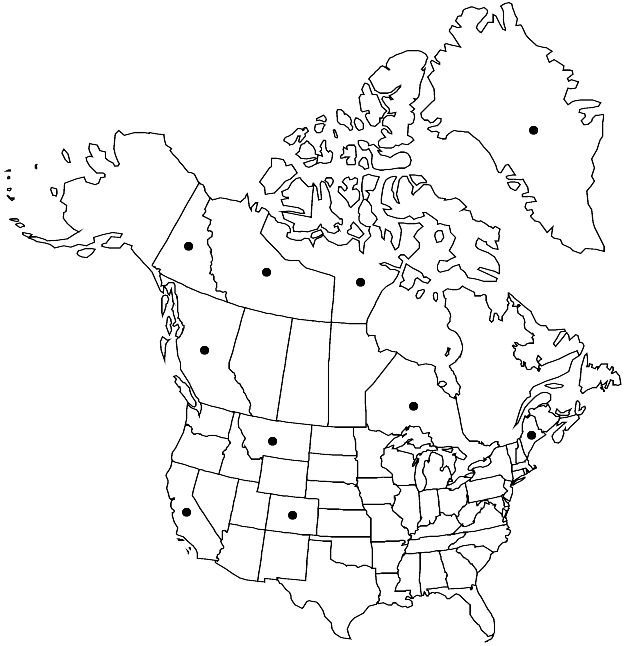Bryum blindii
Bryol. Europ. 4: 163, plate 383. 1846.
Plants gregarious, green to yellow-green. Stems 0.2–1 cm, gemmiform to strongly rounded julaceous. Leaves erect when moist, ovate, somewhat concave, 0.3–1 (–1.2) mm; base red; margins plane; apex broadly acute, not cucullate, not hyaline distally; costa not reaching apex, apiculus absent; proximal laminal cells quadrate or short-rectangular, 8–12 µm wide, 1–2: 1; distal cells of main (fertile) stem and innovation leaves linear-vermicular to elongate-hexagonal, (60–) 70–90 (–100) × 6–10 (–12) µm, (6–) 8–10: 1, walls thick. Specialized asexual reproduction by leaf-axil bulbils, leafy, small. Seta red to redbrown, 1–2 cm. Capsule red to redbrown, ovate, 1–2 mm; hypophysis differentiated, somewhat thickened and rugose when dry. Spores 10–18 µm.
Phenology: Capsules mature Jun–Aug (summer).
Habitat: Calcareous mineral soil, soil banks, cold-temperate to arctic-alpine regions
Elevation: low to high elevations (0-3500 m)
Distribution

Greenland, B.C., N.W.T., Nunavut, Ont., Yukon, Calif., Colo., Maine, Mont., n Eurasia
Discussion
One of the two collections of Bryum blindii from Colorado has leaves with strongly excurrent costae and relatively short distal laminal cells (3–5:1); it is not typical material of the species.
Selected References
None.
Lower Taxa
"narrower" is not a number."narrow" is not a number.